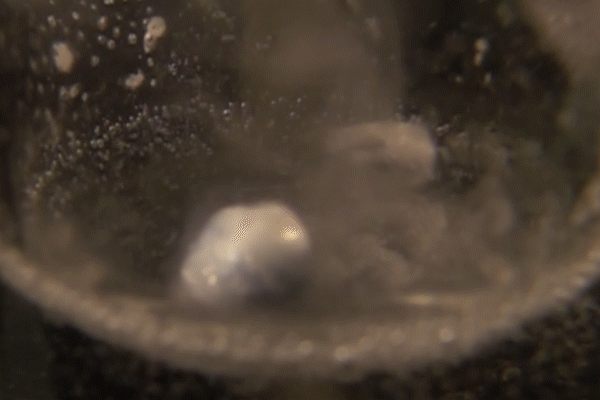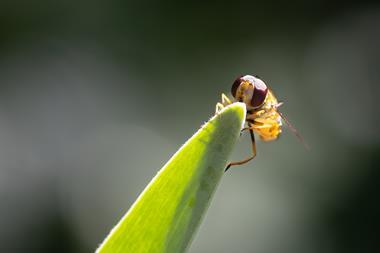‘Chemistry is about a lot of glassware. But it has reflection and refraction and it’s difficult to see what’s actually going on inside. The idea is to make the glassware invisible and show the surprising beauty of simple chemical reactions close up,’ says Yan Liang. His latest videos in the Envisioning chemistry series certainly achieve this aim of making simple chemistry beautiful and features microscopy, high-speed and infrared footage of chemical transformations ranging from precipitation and crystal growth to metal displacement and combustion.
In 2014, Yan and his team started working on artistic renditions of chemical structures and historic instruments. He started Envisioning chemistry when he realised that different content was needed to capture the attention of an audience that might not be familiar with structures and molecules. However, safety was one of his main concerns. ‘There are a lot of videos of dangerous reactions, explosions and the like, out there,’ Yan says. ‘We want to show that simple reactions can be as fascinating as throwing a big chunk of sodium in water.’
The result is a series of 20 videos showing simple transformations such as lead crystals growing on a zinc electrode or precipitation of silver chloride. High-definition footage, often shot against a black background, accompanied by instrumental music give the films an artistic feel.
To decide which reactions to film, the team scoured the internet. ‘We often see videos of reactions and think: “How can we do better? How can we show this reaction in a different way?”’ Yan explains. Then, he and his team do their own experiments – and repeat them until they get the perfect shot.
While the scientists used a mixture of macro lenses, high-speed and thermal imaging cameras, their most captivating images are shot using a microscope camera. ‘You never know what you can discover if you put a lens very close to a chemical reaction,’ Yan says.
There is little scientific explanation in the videos, apart from the occasional chemical formula, however. The series does include a section for teachers though, with worksheets to accompany the videos. ‘People are constantly bombarded by new videos, images and more information. We are trying hard to get people’s attention and get them to focus on science rather than on entertainment for a little while.’

























No comments yet